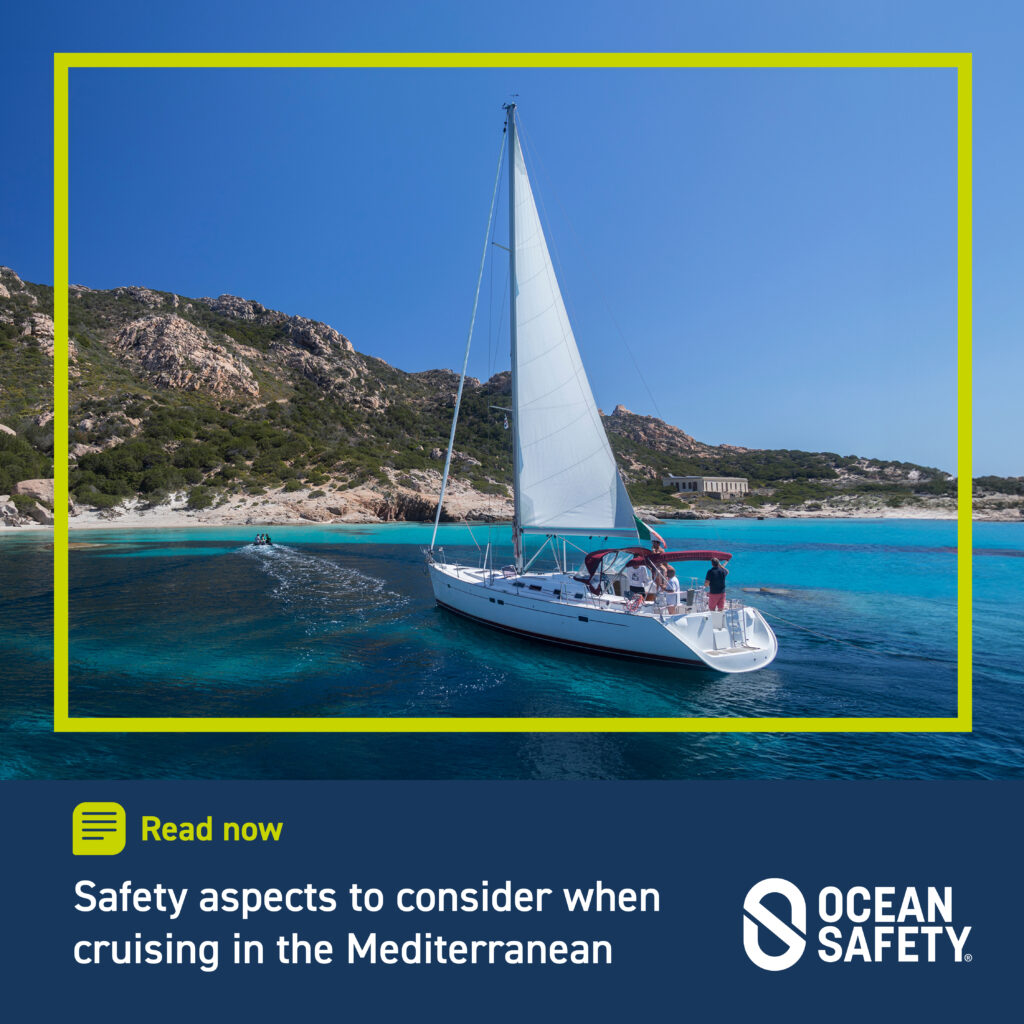If you’ve reached the conclusion that it’s more economical to charter than to own, you’ll be back from your winter trip to the windy old Caribbean. It’ll soon be time to fly down to the Med for some summer sailing where you’ll find on-board safety regs are generally tighter than they are across the pond.
Speaking as a man who ran a sailing school near Marseilles then went on to skipper a yacht not far away, I can tell you that in July and August the heat can be debilitating. If heat isn’t your thing, you might be well advised to avoid these months altogether, or at least make sure you have a big sunhat that won’t get blown away by the Meltemi, plenty of lightweight cover-ups and a gallon or two of sunblock. Also, choose a boat with a Bimini. These might obscure your view of the sails, but they are literally lifesavers with a high sun tearing into you day after day.
Mediterranean boats are often subject to local byelaws regarding safety equipment. These are generally sensible, and you can take up the slack on any shortfall yourself.
- Lifejackets. Bear in mind that while lifejackets are often worn as a matter of course in home waters, this is not necessarily so in the Med. The regulation lifejackets supplied are usually the unwieldy foam-filled jackets of decades back. They’ll save your life but I promise you won’t enjoy wearing them. If you feel safer wearing a lifejacket, take your own, especially for children. Standard on-board kit is adults-only. If in doubt, call and check. Also talk to your airline about gas canisters on the jackets.
- Harnesses. These are generally a requirement of the local regs. They certainly are in Greece, but they won’t be the handy items that clip to a neat modern lifejacket. They are stand-alone units which are not, in fact, used very much.
- Liferaft. Once again, the regulations require these in most countries. The Moorings run a four-hour guarantee of assistance for any on-board issues, including safety. They say that in an emergency close to land it can make more sense to use the dinghy which may well be being towed and which has a useful means of propulsion. Circumstances differ and I wouldn’t care to comment on this policy, but if the yacht were to sink or burn, perhaps the best plan might be to launch the raft and secure it to the dinghy.
- Flare pack. These are on board.
- VHF. All yachts have ‘bulkhead’ VHF, often with cockpit speakers, but many experienced charterers bring their own handheld unit.
- First-aid kits are mandatory. As to what’s in it, if this is a matter of concern, talk to the operator beforehand and top up as your needs require.
- Torches, firefighting etc will be well taken care of.
- EPIRB – Sailing Holidays yachts carry these to allow boats to leave the flotilla and explore on their own. Moorings yachts do not.
Whoever you’re sailing with, you can expect a solid briefing before you leave. Safety records in the Med are generally pretty good. If in doubt, call ahead, then cast off and have a grand holiday. Just watch out for that sun!

